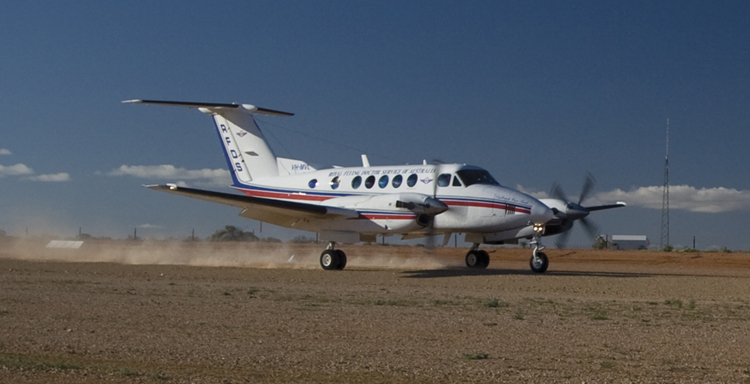Growing up in England's Newcastle in the 1950s, 16,800 kms from its Australian namesake, we thrilled to the tales of the famous Australian Flying Doctors. Our father was a doctor and could just about afford to run to a car. A doctor who flew from station to station, landing on dusty bush airstrips, seemed amazing. Only the idea of going to school by radio seemed more fantastic.
So much was this a part of our childhood, it was with a bit of a shock, when coming to live in Australia nearly 50 years later, to find the Royal Flying Doctor Service still going strong. Indeed, going from strength to strength, and still free to its users and still largely funded by volunteer support and private fund-raising.
That something so inherently useful and necessary needed to be invented seems odd, so established is the idea of the Flying Doctors, yet invented it had to be. John Flynn, a minister with the Presbyterian Church, witnessed the daily struggle of people living in remote areas with little or no medical care available. A keen exploiter of new ideas, he received a wartime letter from a serving fighter pilot, (who had heard of Flynn's ideas), that outlined the capabilities and costs of the aircraft available at the time. Flynn turned his energy and organisational skills to the task of raising the required funds.
In 1928 the first flying doctor service flew, and this year is its 80th anniversary. Flynn guided and drove the organisation, building it into a national network of airbases and bush hospitals, by lobbying government and his own church and by relentless fund-raising.
This need for funding from the public remains. The Flying Doctors are an excellent example of an efficiently-run organisation. There is comparatively little central overhead: the operational divisions manage their own fund-raising and their own services. Being efficient doesn't mean they are immune from the realities of life. Fuel price rises have hit hard recently, and aircraft and medical equipment don't get cheaper.
They have a fund of stories to tell: one of my favourites is the wildflower evacuation. A call came in to the Kalgoorlie base from a farmer who had broken his leg while fixing his truck and then crawled the 100m to his home and a phone. He told the base that his strip was in good condition "but has a few wildflowers on it". The pilot, a doctor, a nurse and an engineer (to see if the truck could be used in the evacuation) took off and headed north. The doctor brought an essential piece of medical equipment: a mountain bike.
The pilot came in low for a look at the landing strip. There were plenty of wildflowers, and also plenty of cattle eating those wildflowers. The pilot decided to make a pass downwind and downhill to scatter the stock, and then look at coming round again on a landing approach. A lot of the stock did shift, so dropping into the approach at 300 feet they prepared for landing and watched the last of the stock move out of the way.
The doctor quickly assembled his bike, and was on his way within minutes while the pilot and the engineer checked the rest of the strip for holes and rocks. 20 minutes later the doctor appeared, driving a dreadful old banger of a truck. No driver's door, and no passenger seats. Everybody piled into the back and off they went to the Station house.
Stabilising the patient, the doctor and the nurse prepared him for the flight. The pilot and the engineer looked at the nice new truck that had caused the injury in the first place, but in the event decided to use the horrible old stock truck to move everyone and the patient back to the plane. From then on it was easy. The patient was quickly and smoothly stacked aboard using the wheeled stretcher and stretcher-lifting device and secured, as was the bicycle, and the pilot readied for take-off.
The story is representative of the conditions bush pilots and their passengers must face with equanimity, and of the hands-on practicality they must bring to problems in very remote areas, while maintaining the highest standards of professionalism.
To maintain this quintessentially iconic Australian service, operating over these enormous distances throughout the outback requires your money. AUD8m buys and medically fits-out a plane, AUD1.2m pays for an average plane's scheduled maintenance for 5 years. AUD38k buys an oxygen and suction system for a flying intensive care unit. AUD700 buys a foetal heart monitor. AUD20 helps too. Every little helps.
Open your wallet or purse, and pull out a AUD20 note. The red one. Pictured you will see John Flynn; Victory, the first aircraft flown out of Cloncurry in 1928; the camels used in medical missionary work, the pedal-powered radio used to make the first call for assistance and other images associated with Flynns pioneering service. Now that your wallet is open... Buy them a plane!
